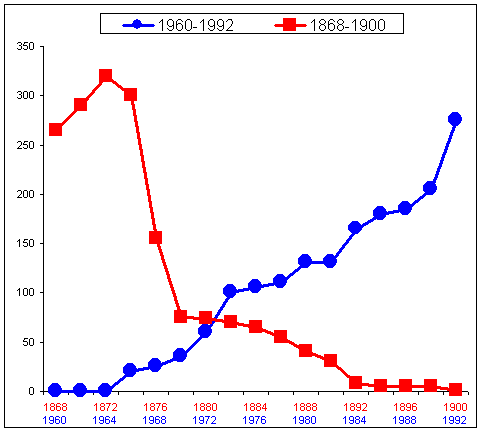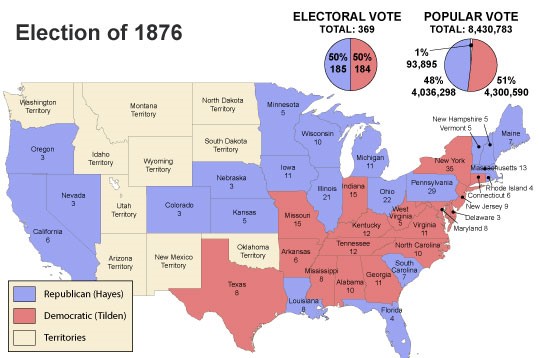My students struggle to understand the various costs and benefits of Military Reconstruction, and the results of its removal in the Compromise of 1877. This method will allow them to look at multiple perspectives, who gained, and who lost.
Consider the political and social consequences of the end of Military Reconstruction
Missouri’s 6-12 Social Studies MLS
Government Systems and Principles: Theme 1 - C - Predict the consequences which can occur when institutions fail to meet the needs of individuals and groups.
Government Systems and Principles: Theme 5 - D - Analyze the motivations for and results of changing concepts of the federal government in post-Civil War America.
Textbook or prior lessons related to Military Reconstruction and the Compromise of 1877.
Alternative digital articles:
Summary: https://www.history.com/news/voter-suppression-after-reconstruction-southern-states
Summary (particulary 2nd half): https://courses.lumenlearning.com/ushistory2ay/chapter/the-end-of-reconstruction-2/
Electoral college map of 1876
Students will be given several visuals regarding legislation and voting before and after the Election of 1876 and will complete a SWOT graphic organizer using their prior knowledge, prediction skills, and graph reading abilities. Student handouts are included with links. Then students will summarize the social and political impacts of the Compromise that gave Hayes the presidency
The Consequences of Ending Military Reconstruction SWOT
Directions: Consider the perspectives of Southerners regarding the Compromise of 1877.
Southern African-Americans:
|
Strengths |
Weaknesses |
|
Opportunities |
Threats |
Southern Democrats:
|
Strengths |
Weaknesses |
|
Opportunities |
Threats |
Summarize: Why were Southern Democrats willing to give Republican candidate Rutherford B. Hayes the presidency in 1876 and how did that lead to the rise of black codes and Jim Crow?

